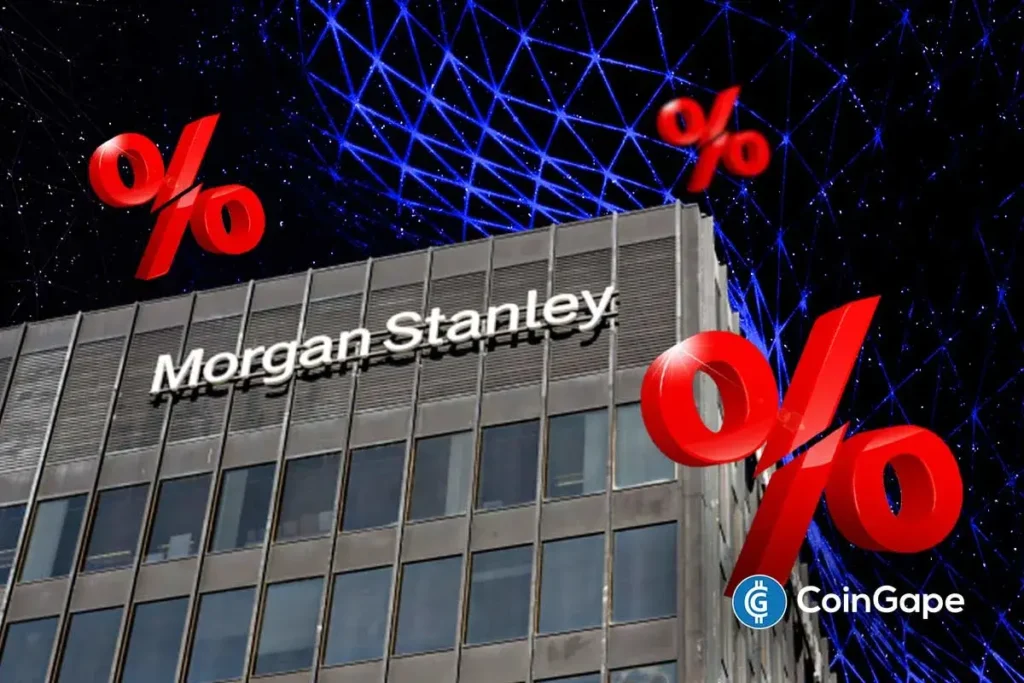Morgan Stanley’s Shift in Interest Rate Outlook: What It Means for Investors
Morgan Stanley, among other financial institutions, maintained a ‘no change’ outlook on the Federal Reserve’s interest rates until recently. However, in light of recent developments, including Fed Chair Jerome Powell’s Jackson Hole speech and growing political pressures, Morgan Stanley has shifted its forecast. The Fed has kept interest rates unchanged for five consecutive meetings, but expectations are now shifting, signaling potential rate cuts on the horizon.
Morgan Stanley’s Predictions: Rate Cuts on the Way
Previously, Morgan Stanley projected no interest rate cuts until 2025, believing the U.S. Federal Reserve would hold rates steady until March 2026. This stance has changed dramatically, as the bank now forecasts two cuts within 2023—one as early as September, followed by another in December. This adjustment reflects a broader consensus among experts and analysts, including Reuters, who report a predicted reduction of 25 basis points (bps) during these meetings. Furthermore, quarterly cuts through 2026 have also been anticipated, with Morgan Stanley indicating that a more aggressive 50 bps cut may occur if payroll data indicate significant job losses.
The Impact of Jerome Powell’s Jackson Hole Speech
A pivotal moment influencing Morgan Stanley’s revised outlook was Jerome Powell’s recent address at Jackson Hole. In his speech, Powell shifted the focus from inflation to the risks present in the labor market, hinting at a possible rate cut. This approach indicates an intention to prioritize job protection, which resonates with policymakers and investors alike. Consequently, other major banks, including Barclays and Deutsche Bank, have revised their rate expectations in line with Powell’s comments.
Political Pressures on the Fed
Adding another layer of complexity to the Fed’s decision-making process is the political pressure surrounding its members. Notably, President Trump has threatened to remove Fed Governor Lisa Cook, citing her alleged involvement in mortgage fraud. Such political dynamics could compel the Fed to consider rate cuts as a means to stabilize the economy and appease public sentiment, particularly given the mixed messages surrounding the economic recovery.
Changing Investor Sentiment
Following Powell’s speech, investors’ expectations regarding a rate cut have notably shifted. Data from the CME FedWatch Tool indicates an 84.2% likelihood of a September cut, while Polymarket reflects an 83% probability, with 77% of wagers focusing specifically on a 25 bps decrease. This stark change in sentiment is reflective of an evolving economic landscape where investor confidence and risk appetite are in flux.
Remaining Divergence in Forecasts
Despite the prevailing forecast shifts, not all financial institutions align with Morgan Stanley’s new projections. For instance, Bank of America maintains its expectation of no cuts this year, deviating from the majority perspective. This divergence underscores the uncertainty still permeating the market, which will require close monitoring in the coming months as economists and analysts globally assess the Fed’s trajectory.
Conclusion: Navigating the Future
Morgan Stanley’s recent pivot in interest rate forecasts encapsulates the complex interplay of economic indicators, political influences, and central bank communications. As we approach the next FOMC meeting, investors must stay informed about how these variables will shape monetary policy and market conditions. The evolving landscape suggests that the Fed may prioritize labor market stability, potentially leading to interest rate cuts that could benefit consumers and the broader economy. As always, remaining vigilant and adaptable in the face of changing circumstances will be essential for navigating these financial waters.


